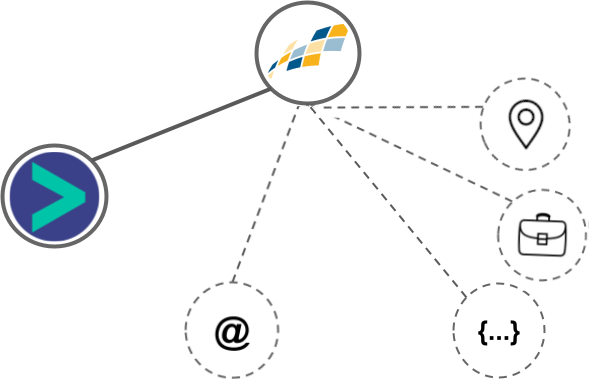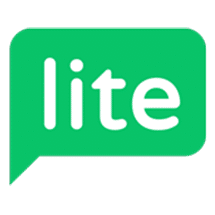Salesforce vs Constant Contact
Hyperise integrates with 100's of sales and marketing tools, many of which are in the CRM category. With so many to choose from it's sometimes hard to know which is best, but don't worry, we've got your covered.
In this comparison guide we're going to look at the Highlights, Pros, Cons and Pricing of Salesforce and Constant Contact. We'll also delve into the details of which offers the best personalization options within CRM, with there respective Hyperise integrations
Salesforce
Pricing: Salesforce offers a variety of pricing options and packages depending on the needs of your business. Here is a brief summary of the pricing plans: 1. Essentials: starts at $25 per user per month, with basic features for small businesses. 2. Sales Professional: starts at $75 per user per month, with advanced sales features. 3. Service Professional: starts at $75 per user per month, with advanced customer service features. 4.
Vs

Constant Contact
Pricing: Constant Contact offers two pricing plans: 1. Email: This plan starts at $20 per month (with a discount for annual billing) and allows you to send unlimited email campaigns to up to 500 contacts. The price increases as the number of contacts on your list grows. 2. Email Plus: This plan starts at $45 per month (with a discount for annual billing) and includes all the features of the Email plan, plus additional features like automation, advanced reporting, and event marketing.
Salesforce vs Constant Contact Highlights
Salesforce and Constant Contact are both software platforms designed for businesses to manage their customer data and communications. However, while they share some similarities, there are also some significant differences between them.
Salesforce is a more comprehensive platform that goes beyond just email marketing. It offers a wide range of features, including customer relationship management, sales automation, marketing automation, and analytics. It is a powerful tool for managing customer interactions across multiple channels, such as social media and mobile devices. However, it can be more complex to use than Constant Contact and may require some technical expertise to set up and customize.
On the other hand, Constant Contact is a more focused platform that is specifically designed for email marketing. It offers a range of templates and tools for creating and sending email campaigns, as well as features for managing contact lists and tracking engagement. It is easier to use than Salesforce and can be a good choice for businesses that primarily rely on email marketing to reach their customers.
Overall, the choice between Salesforce and Constant Contact will depend on the specific needs of your business. If you require a comprehensive platform that can handle a variety of customer interactions, Salesforce may be the better choice. If you are primarily focused on email marketing, Constant Contact may be the more streamlined and user-friendly option.
Salesforce vs Constant Contact Pros
Salesforce Pros
- Salesforce offers a more extensive range of CRM features compared to Constant Contact.
- Salesforce is ideal for larger companies that need a more powerful CRM system and customizations, while Constant Contact is better suited for small businesses.
- Salesforce offers social media integration with LinkedIn, Facebook, and Twitter, while Constant Contact offers only limited social media integration.
- Salesforce allows companies to track a lead throughout the entire customer journey, from initial contact to sale, and beyond, while Constant Contact only handles email campaigns.
- Salesforce provides better reporting and analytics, enabling companies to gain valuable insights into their sales process, whereas Constant Contact only provides basic campaign analytics.
- Salesforce offers an extensive range of third-party integrations with tools like Google Analytics, Mailchimp, and Shopify, which allows businesses to automate data entry and workflows.
Constant Contact Pros
- The user interface of Constant Contact is straightforward and intuitive, making it easy for users to navigate and quickly create email campaigns.
- Constant Contact has a wide variety of customizable email templates to choose from, which can be easily edited to match your brand and messaging.
- Constant Contact has a robust reporting and analytics system, providing insights into email performance and engagement.
- Constant Contact offers integrated contact management, allowing users to efficiently organize their contact lists and target specific segments with tailored messaging.
- Constant Contact also offers social media integration, enabling users to cross-promote their email campaigns on multiple channels.
- Constant Contact has excellent customer support, providing users with phone and chat support, as well as helpful resources such as a knowledge base and community forum.
Salesforce vs Constant Contact Cons
Salesforce Cons
- Sure, here are some cons of Salesforce compared to Constant Contact:
- Steep learning curve: Salesforce can be more challenging to learn and use than Constant Contact, which has a more user-friendly interface.
- Higher cost: Salesforce is generally more expensive than Constant Contact, especially for smaller businesses or organizations.
- Not as email-focused: While Salesforce can handle email marketing, it is primarily a CRM platform and may not have the same level of email marketing features as Constant Contact.
- Customization requires technical expertise: Customizing Salesforce to suit your business needs often requires technical expertise or the help of a developer.
- Limited customer support: Salesforce has limited customer support options and can be difficult to get in touch with if you have a problem. Constant Contact, on the other hand, offers phone and chat support.
Constant Contact Cons
- Constant Contact is primarily focused on email marketing and lacks the wider range of functionalities offered by Salesforce.
- Salesforce offers advanced sales and marketing automation features that Constant Contact doesn't have.
- Salesforce offers a CRM system, while Constant Contact only has basic contact management capabilities.
- Constant Contact's reporting and analytics features are not as comprehensive as Salesforce's.
- Constant Contact does not have as many integration options as Salesforce, which has a robust app ecosystem.
- Salesforce offers a more customizable platform with greater flexibility than Constant Contact.
- Constant Contact does not offer lead scoring, which is essential to measure the quality of leads before they are sent to sales reps.
- Salesforce offers customer service tools that allow businesses to track customer interactions and issues, which Constant Contact lacks.
Salesforce & Constant Contact Hyperise Integrations
Salesforce uses the HTML code embed method to integrate with Hyperise, giving a simple way to add personalized images to your messages.
Salesforce makes the following data points available to Hyperise, to enable personalization in images used in outreach and linked out to your personalized website landing pages.
- Using business Email passed from Salesforce, Hyperise is able to enrich business logo and website screenshots. In some cases, with a business Email we're also able to enrich profile images, subject to the business email having a publicly available profile.
- Using business Website passed from Salesforce, Hyperise is able to enrich business logo and website screenshots.
- Business name
- City
- State
- Country
- Zip
- Category
Salesforce Integration Guide
Constant Contact uses the HTML code embed method to integrate with Hyperise, giving a simple way to add personalized images to your messages.
Constant Contact makes the following data points available to Hyperise, to enable personalization in images used in outreach and linked out to your personalized website landing pages.

- Using business Email passed from Constant Contact, Hyperise is able to enrich business logo and website screenshots. In some cases, with a business Email we're also able to enrich profile images, subject to the business email having a publicly available profile.
- Business name
- Job title
- Street
- Street2
- City
- State
- Zip
- Country
Constant Contact Integration Guide
 vs
vs  vs
vs  vs
vs 



 vs
vs  vs
vs  vs
vs  vs
vs  vs
vs 

 vs
vs 


 vs
vs 
 vs
vs  vs
vs  vs
vs 








 vs
vs  vs
vs  vs
vs 




